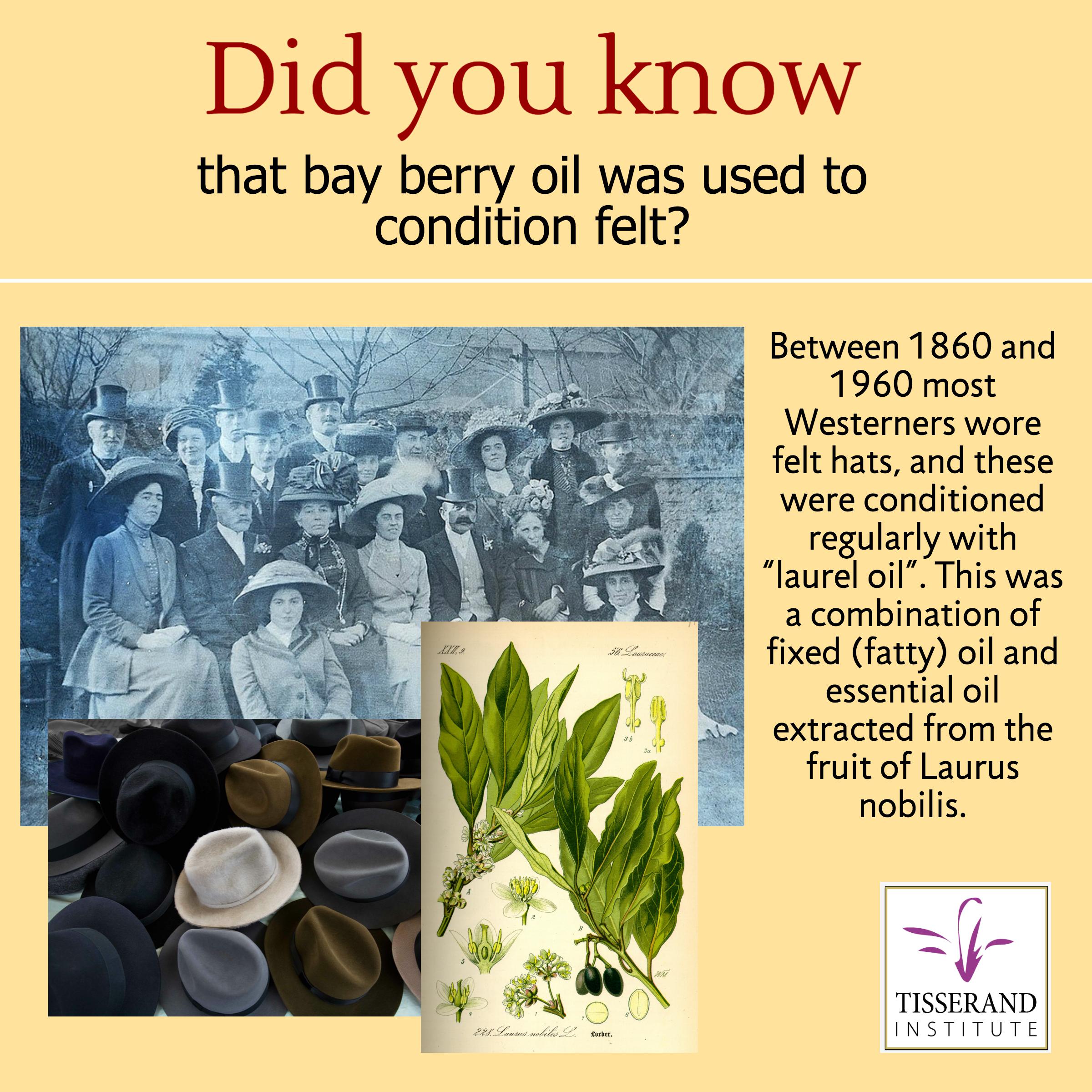Did you know that laurel has a very rich history?
Between 1860 and 1960 most Westerners wore felt hats, and these were conditioned regularly with “laurel oil”. This was a combination of fixed (fatty) oil and essential oil extracted from the fruit of Laurus nobilis.
It was used to condition not only hats, but also other felt garments and its widespread use caused many cases of skin allergy – over 4% of those patch tested were allergic. This was most likely due to the constituents costunolide and dehydrocostus lactone, which are notorious skin sensitizers also found in costus oil.
This type of laurel oil has also been used medicinally. The English herbalist Culpeper said this about it in 1652: “The oil made of the berries is very comfortable in all cold griefs of the joints… by anointing the parts affected therewith… The oil takes away the marks of the skin and flesh by bruises, falls, &c.”
It is traditionally prepared by boiling the whole berries in water for six to eight hours in a metal container over a wood fire. As the oil rises to the surface, it is skimmed off with a wooden spoon and then filtered and bottled.
It is still produced by traditional methods in Syria, Turkey and Madeira and used in locally made soaps and cosmetics. Laurel LEAF essential oil is commercially available. It contains no costus lactones and is not regarded as a high-risk allergen.


0 Comments